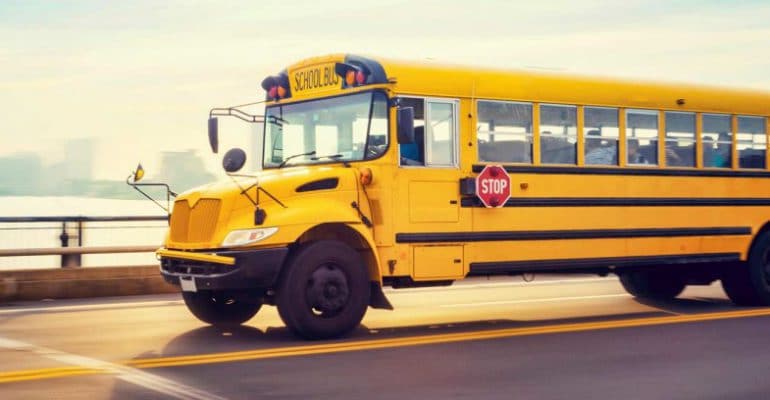Stop arm cameras help keep drivers focused on safe
offloading and on-loading of students by being able to capture violating
events. These events are tagged with relevant details such as time, date, and
GPS required for law enforcement to take action.
Thousands of school districts across North America rely on the stop arm to
protect students as they are trying to get on or off of the bus. According to
the National Association of State Directors of Pupil Transportation, 85,279
cars do not stop for a stopped school bus in only a single day.
This is quite alarming, in that students’ lives are being put at risk due to
the carelessness of motorists. This is why BusPatrol has made it their mission to get school buses equipped with stop-arm cameras.
What Are Stop-Arm Cameras?
Many schools in the U.S. are using specialized technology to ensure the safety of their students. Automatic stop-arm cameras are being used by many public schools to notify drivers who are violating the law by going past school busses during the release of the stop arm.
They are ignoring the red flashing lights, endangering the lives of young children and teens as they either enter or exit the bus. Stop arm cameras are being used as a tool by schools and the police to help protect children from motorists who are carelessly passing a stopped school bus. It allows local police officers to be able to take action.
How do Stop-Arm Cameras Work?
Stop-arm cameras can detect violations and license plate numbers. There are high-resolution cameras placed on the outside surface of the school bus stop signal. The camera turns on when a school bus releases its stop-arm.
The cameras can take images and videos of vehicles that are passing the stopped school bus within the desired zone. In these images and videos are bits of important information about the vehicle and license plate.
After the data is collected on the camera, it is uploaded to a system in order to be processed and further sent to the local police station.
If the violations are approved by the police, a citation is then issued and sent to the vehicle owner that violated the stop arm of the bus.
Vehicle owners can think of these citations like a parking ticket. The violations are assigned to the owner on the vehicle’s registration, regardless of who was driving it at the time of passing by the school.
However, since this is a civil penalty, there will not be any points added to your record, and your insurance rates will also not be changed.
Improved Results
Buses that implemented stop-arm camera have noticed that most drivers are unlikely to be recurring violators. When an owner has received at least one citation for going past a stopped school bus, they are less likely to do the same again. This also makes them aware of school buses on the road to ensure the safety of the students.
Also, some drivers may not be aware that they need to stop when they are in the zone of the school bus while it is stopped. A notice of the violation will be a great reminder to motorists that this law must be followed.
Cost to the Schools
Public schools are able to afford this program for their buses because it is able to be paid off through the many traffic violation fines. So, in a sense, the program is basically self-sufficient and a very useful tool.
Stop-arm cameras are also cost-effective for law enforcement because they do not need to hire more police officers to patrol school zones. Police can’t be at every stop and pickup, so to ensure everyone’s safety, cameras placed on buses will help determine who has made a violation.
Law enforcement can then get involved and in turn give out citations and fines.
Final Verdict
BusPatrol believes student safety is essential for public school systems, and losing a life is never a good thing. Motorists sometimes do not notice a bus that is stopped or are trying to rush to their next destination.
However, it is essential that everybody follows the law to ensure that everybody can get to their destination safely.
